Electronics 2A: Create Wearable Electronics
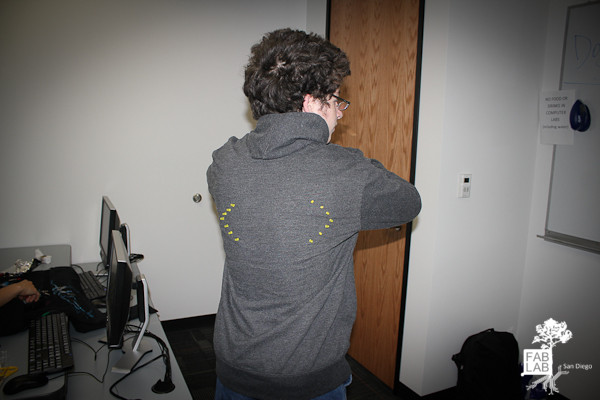
Soft Circuitry is the new black in the world of electronics. Learn how to use the Lilypad Arduino and make your own soft buttons (analog and digital), soft piezo buzzers and create a final project of your own choice.
‘Wearable Electronics’ is a course focusing on the use of electronics on textile surfaces. In addition to being a good introduction to electronics, this class is hands-on: students will create their own wearable electronics projects, using the LilyPad, the wearable Arduino board.
 The learning outcomes associated with this class have been WASC-accredited by UCSD Extension College Exploration.
The learning outcomes associated with this class have been WASC-accredited by UCSD Extension College Exploration.
By the end of this course, students will have an intermediate level understanding of electronic and programming concepts, including, but not limited to, sensors and textile actuators: fabric switches, stretch sensors, and temperature sensors, embeded systems and the “Arduino” microcontroller, as well as have completed wearable electronic projects.
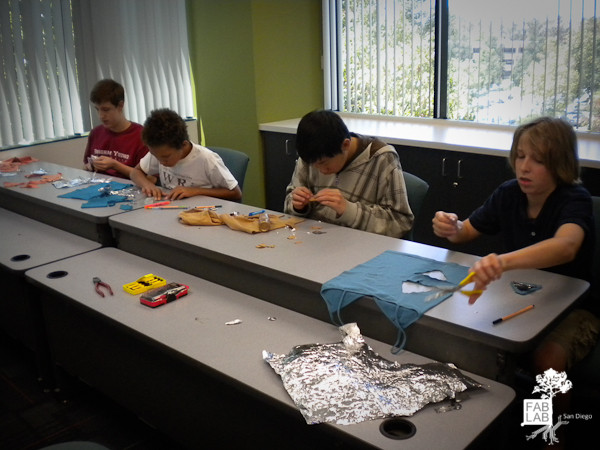
Create Wearable Electronics
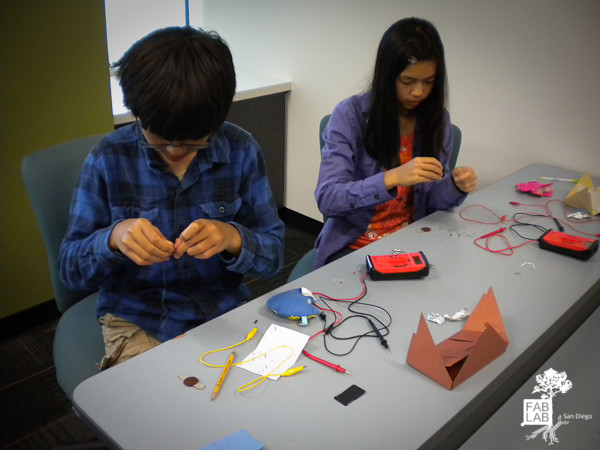
Create Wearable Electronics
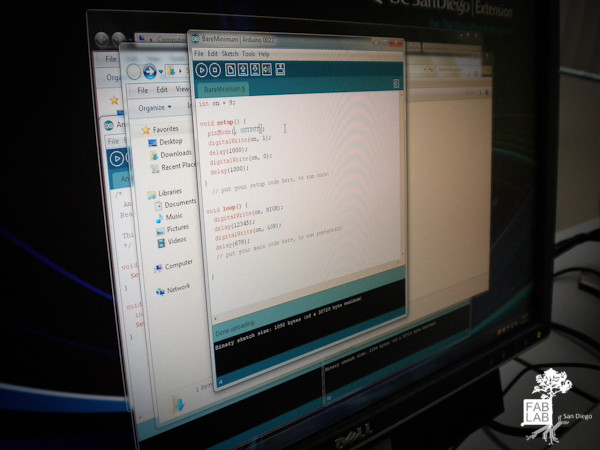
Working with Arduino
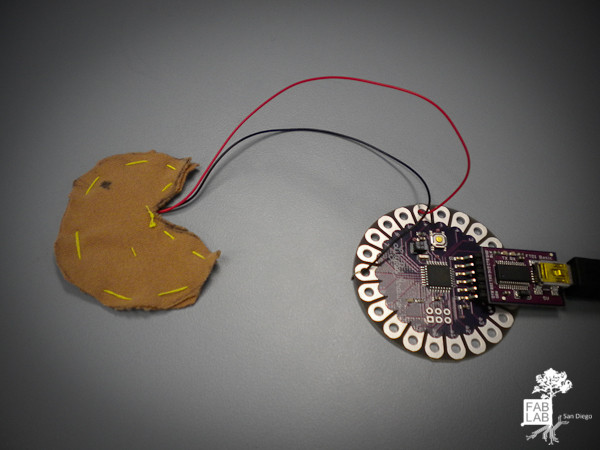
Create Wearable Electronics
This course is designed for students with some or no electronics/programming experience. While the course is fast-paced, it is a fun and hands-on application of learning, and students will be given thorough context and reference materials as well as personal assistance in class.
[tab name=”Course Goals/Learning Objectives”]
The goal of this course is to create and design a comprehensive project that touches on two key areas of wearable electronics: microprocessor control and sensors. The course will take you through observation, documentation, investigation, and research of given topics, as well as adding to what is given.
The class is geared to high school students, and it is useful if you have basic understanding of electricity and electronics, although this is not necessary; we will review necessary fundamentals of electricity and electronics in the beginning of the course. Some programming knowledge is also useful, since Arduino microprocessors need to be programmed in the Arduino language (available free at www.arduino.cc). Again, this is not a necessary requirement, but only a recommendation, since the level of programming necessary for this course is basic and will be reviewed in the initial sessions.
[/tab]
[tab name=”Structure”]
This course is taught using classroom and lab instruction employing lecture/demonstration, in-class exercises, student participation, and class activities leading to a final project. Classes will include introductory concept presentations, followed by in-class exercises. The first couple of sessions will be more fundamental (general electricity, electronics, etc), but will subsequently expand to cover necessary knowledge for programming and component building. Throughout, there will also be handouts and brief presentations on relevant concepts, including sensing/actuating, lighting/photonics, electronics, design and spatial theory.
[/tab]
[tab name=”Videos”]
[/tab]
[tab name=”Links”]
Arduino
[/tab]
[end_tabset]
